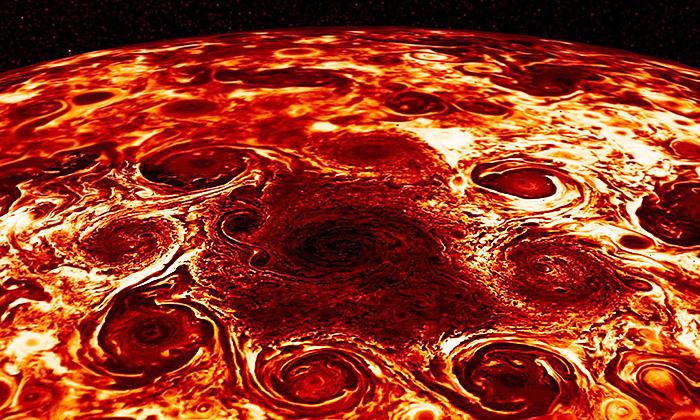NASA’s Juno space probe is on a multi-year mission to explore the origins and evolution of the gas giant Jupiter—it’s serious science.
But Instagrammers have shared some rather unserious observations of Juno’s highly detailed infrared image posted on the space agency’s Instagram page.






